|

On eBay Now...
"4th Earl of Clarendon" George William Frederick Villiers Signed 2X4 Card COA For Sale

When you click on links to various merchants on this site and make a purchase, this can result in this site earning a commission. Affiliate programs and affiliations include, but are not limited to, the eBay Partner Network.

"4th Earl of Clarendon" George William Frederick Villiers Signed 2X4 Card COA:
$279.99
Up for sale"4th Earl of Clarendon" George William Frederick Villiers Hand Signed 2X4 Card.This item is certified authentic by ToddMueller Autographs and comes with their Certificate of Authenticity.ES-3706
George William Frederick Villiers, 4th Earl of Clarendon, KG, KP, GCB, PC (12 January 1800 – 27 June 1870) was an English diplomat and statesman from the Villiers family. Villiers was born in London, the son of George Villiers and Theresa Parker. He went up to Cambridge at the early age of sixteen and entered St John's College on 29 June 1816. In 1820, as the eldest son of an earl's brother with royal descent, he was able to take his MA degree under the statutes of the university then in force. In the same year, he was appointed attaché to the British embassy at Saint Petersburg. There he remained three years, and gained that practical knowledge of diplomacy which was of so much use to him in later life. He had "received from nature a singularly handsome person, a polished and engaging address, a ready command of languages, and a remarkable power of composition". Upon his return to England in 1823, he was appointed to a commissionership of customs, an office which he retained for about ten years. In 1831, he was despatched to France to negotiate a commercial treaty, which however was fruitless. On 16 August 1833, he was appointed minister at the court of Spain. Ferdinand VII died within a month of his arrival at Madrid, and the infant queen Isabella, then in the third year of her age, was placed on her contested throne, based on the old Spanish custom of female inheritance. Don Carlos, the late king's brother, claimed the crown by virtue of the Salic law of the House of Bourbon which Ferdinand had renounced before the birth of his daughter. Isabella II and her mother Christina, the queen regent, became the representatives of constitutional monarchy, Don Carlos of Catholic absolutism. The conflict which had divided the despotic and the constitutional powers of Europe since the French Revolution of 1830 broke out into civil war in Spain, and by the Quadruple Treaty, signed on 22 April 1834, France and England pledged themselves to the defence of the constitutional thrones of Spain and Portugal. For six years Villiers continued to give the most active and intelligent support to the Liberal government of Spain. He was accused, though unjustly, of having favoured the revolution of La Granja, which drove Christina, the queen mother, out of the kingdom, and raised Espartero to the regency. He undoubtedly supported the chiefs of the Liberal party, such as Espartero, against the intrigues of the French court; but the object of the British government was to establish the throne of Isabella on a truly national and liberal basis and to avert those complications, dictated by foreign influence, which eventually proved so fatal to that princess. Slavery was intended to be illegal in Spanish colonies from 1820, but this was not working. Villiers worked with the help of the Times correspondent David Turnbull to get slavery removed from Spanish colonies. In 1835 the Spanish reaffirmed their commitments. Villiers received the Grand Cross of the Bath in 1838 in acknowledgment of his services, and succeeded, on the death of his uncle, to the title of Earl of Clarendon; in the following year, having left Madrid, he married a young widow, Lady Katharine Foster-Barham (née Grimston), eldest daughter of James Grimston, 1st Earl of Verulam. In January 1840 he entered Lord Melbourne's Whig administration as Lord Privy Seal, and from the death of Lord Holland in the autumn of that year Lord Clarendon also held the office of Chancellor of the Duchy of Lancaster until the dissolution of the ministry in 1841. Deeply convinced that the maintenance of a cordial understanding with France was the most essential condition of peace and of a liberal policy in Europe, he reluctantly concurred in the measures proposed by Lord Palmerston for the expulsion of the Mohammed Ali of Egypt from Syria; he strenuously advocated, with Lord Holland, a more conciliatory policy towards France; and he was only restrained from sending in his resignation by the dislike he felt to break up a cabinet he had so recently joined.


RARE "4th Earl of Rosebery" Archibald Primrose Hand Written Note Dated 1834 COA $279.99
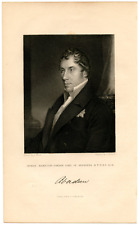
GEORGE HAMILTON-GORDON 4th EARL OF ABERDEEN, Prime Minister, 1831 Engraving 9644 $20.00
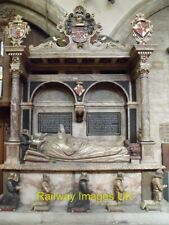
Photo Church - Tomb of 4th Earl of Rutland St Mary's Church Bottesford c2011 $2.51
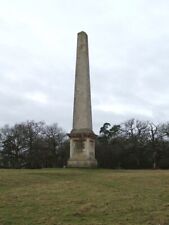
Photo 6x4 Obelisk for the 4th Earl of Bristol Broad Green/TL7859 Obelis c2008 $2.51
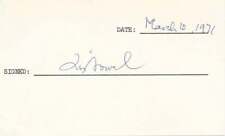
William Francis HARE, 4th Earl of Listowel / Signature Signed $36.00
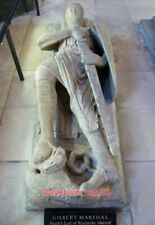
PHOTO TEMPLE CHURCH - GILBERT MARSHAL 4TH EARL THIS EFFIGY IS THE BOTTOM LEFT O $2.13
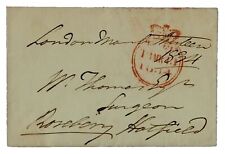
"4th Earl of Rosebery" Archibald Primrose Signed Free Frank Dated 1834 $279.99
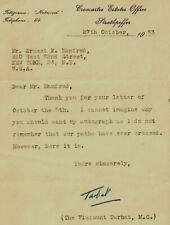
RARE "4th Earl of Cromartie" Roderick MacKenzie Hand Signed TLS Dated 1953 COA $139.99
|